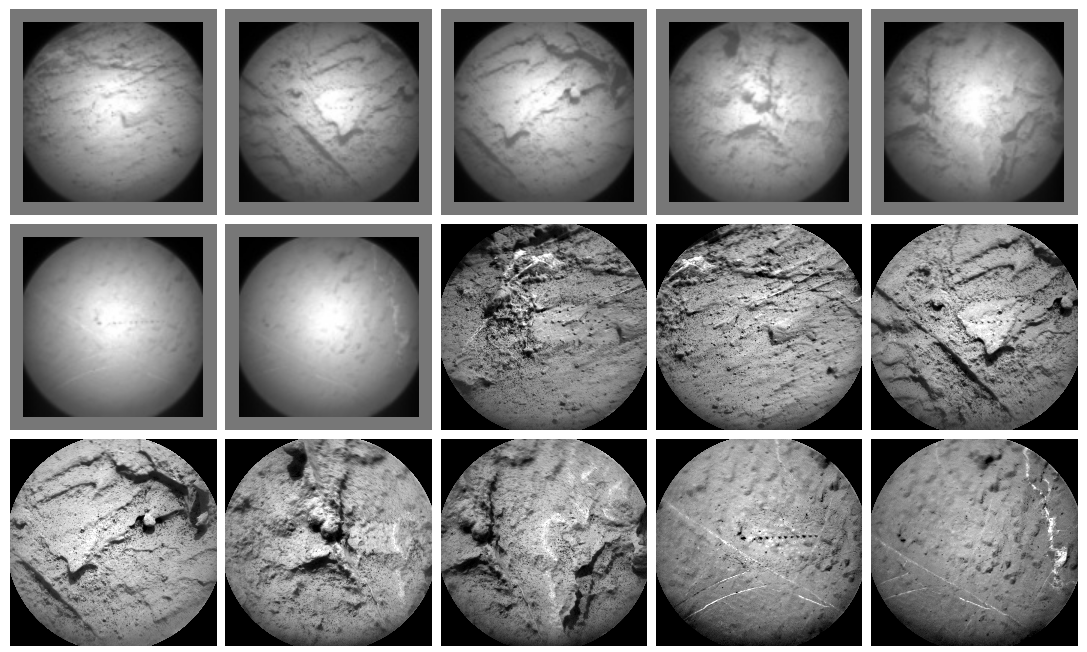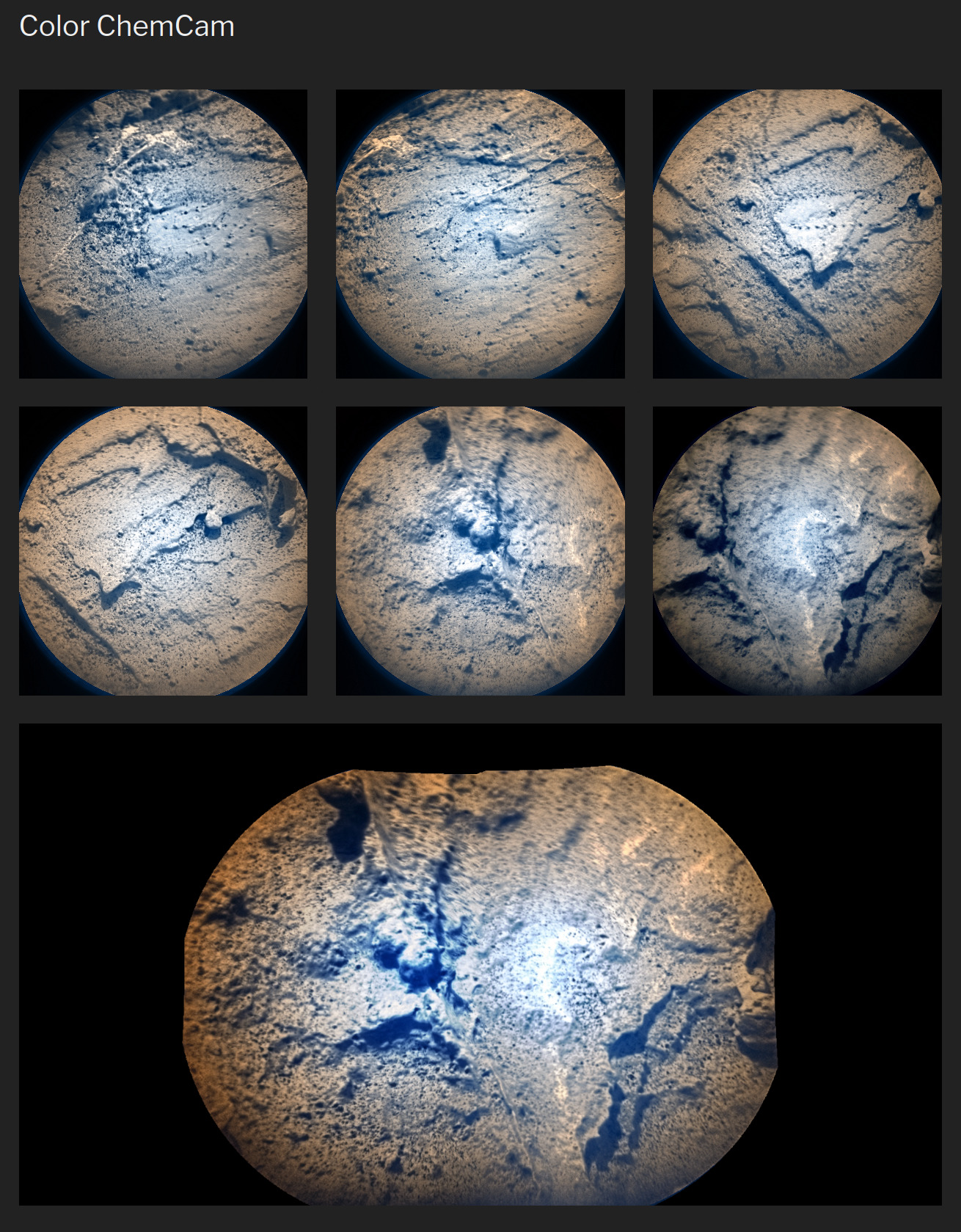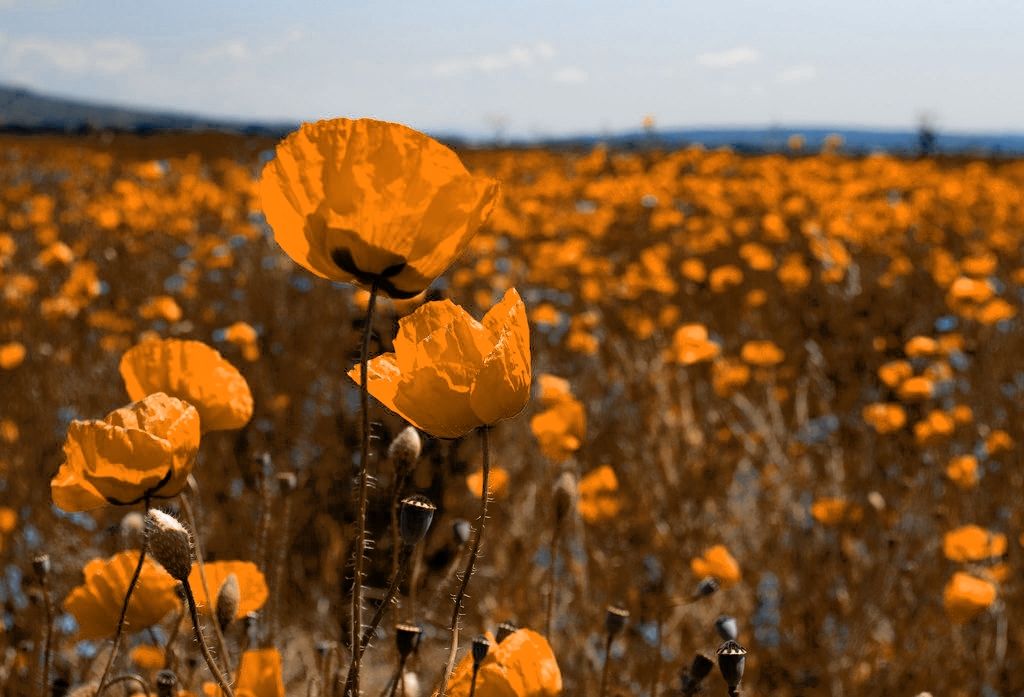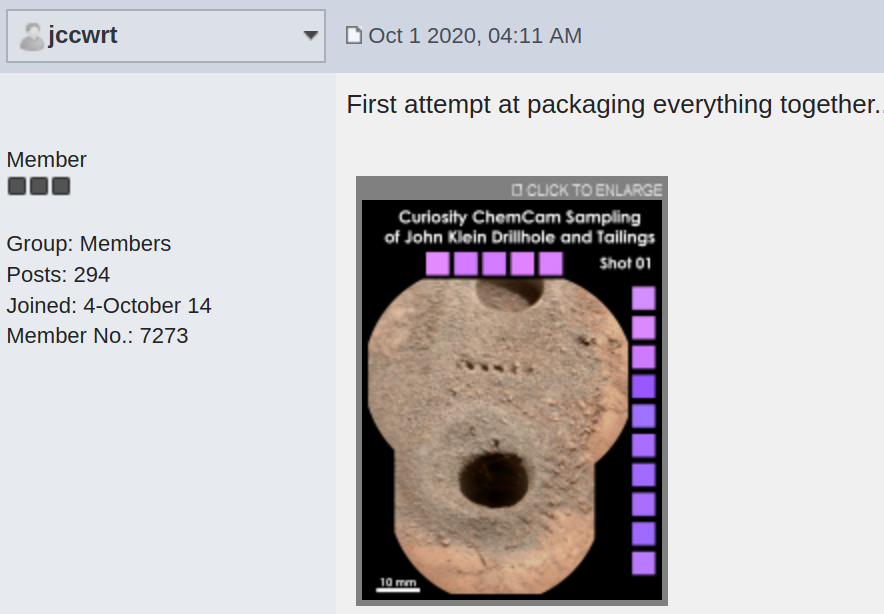It looks like you're using an Ad Blocker.
Please white-list or disable AboveTopSecret.com in your ad-blocking tool.
Thank you.
Some features of ATS will be disabled while you continue to use an ad-blocker.
17
share:
These are not true color images. They also are not colorized. All color data came from raw NASA images.
The images were created with two black and white images. The two images were averaged to create a third. I didn't just make this process up. It has been a way to process color images for sometime now.
I learned of this processing MGS images. That orbiter only had a red and blue filter if I remember right. I know it didn't have a green filter and it is possible it only had a blue filter. To make color images of Mars NASA would average 2 images to create the third "artificial" green image. Then combined them into a color image.
I did the same thing with MER Microscopic Imager pictures. The Imager had a transparent dust cover that NASA would shoot images thru. After posting color Microscopic images to the web a few times, NASA decided there was no scientific value in taking images thru the dust cover and stopped releasing them.
So there is not scientific value in these color images. I like color and there are a few things that could be fossils, maybe.
 In the above, the images on the top were used as the blue image, the images at the bottom were used as the red.
In the above, the images on the top were used as the blue image, the images at the bottom were used as the red.

Raw Image Source
Color Image Source
The images were created with two black and white images. The two images were averaged to create a third. I didn't just make this process up. It has been a way to process color images for sometime now.
I learned of this processing MGS images. That orbiter only had a red and blue filter if I remember right. I know it didn't have a green filter and it is possible it only had a blue filter. To make color images of Mars NASA would average 2 images to create the third "artificial" green image. Then combined them into a color image.
I did the same thing with MER Microscopic Imager pictures. The Imager had a transparent dust cover that NASA would shoot images thru. After posting color Microscopic images to the web a few times, NASA decided there was no scientific value in taking images thru the dust cover and stopped releasing them.
So there is not scientific value in these color images. I like color and there are a few things that could be fossils, maybe.


Raw Image Source
Color Image Source
edit on 28-6-2020 by LookingAtMars because: clarity
I used to do this kind of stuff, but I gave up after considering the probability and odds involved with encountering a "fossil" on the surface of
Mars.
Probably next to impossible, if being realistic.
Giant silicon dioxide storms have been sand blasting the surface of Mars for millions of years. it takes full radiation exposure from the sun, and the environment is extremely desiccant.
Anything that could be a fossil on the surface, is being obliterated by that environment, especially when you factor in thermal stress from the massive hot/cold swings over time.
I stopped colorizing the Curiosity images. It really doesn't matter if you find anything in these images.
No follow-up can be performed, with Curiosity's tool-set. JPL/NASA/MSL really won't even bother to consider outside input on Curiosity findings.
They've done a very very very small handful of checks over previously seen area, due to public input, but in those situations they were probably going to do it anyway.
What I'm having better luck with, is waiting for the next rover to get there.
Curiosity is a done game.
The next rover will be able to get us some real answers. Probably.
Probably next to impossible, if being realistic.
Giant silicon dioxide storms have been sand blasting the surface of Mars for millions of years. it takes full radiation exposure from the sun, and the environment is extremely desiccant.
Anything that could be a fossil on the surface, is being obliterated by that environment, especially when you factor in thermal stress from the massive hot/cold swings over time.
I stopped colorizing the Curiosity images. It really doesn't matter if you find anything in these images.
No follow-up can be performed, with Curiosity's tool-set. JPL/NASA/MSL really won't even bother to consider outside input on Curiosity findings.
They've done a very very very small handful of checks over previously seen area, due to public input, but in those situations they were probably going to do it anyway.
What I'm having better luck with, is waiting for the next rover to get there.
Curiosity is a done game.
The next rover will be able to get us some real answers. Probably.
Great images. I watched an educational film last week explaining how the Hubble used three images, red, blue, green and overlayed for the same effect.
However, the resulting colours were manipulated/skewed along the spectrum to represent various gases.
The resulting photographs being far more colourful than what we would expect to see for real.
The resulting photographs being far more colourful than what we would expect to see for real.
Thanks for your work, great images. I've been using this method for various space images for years. The result looks a bit on the orange and cyan
side, so a little hue adjustment can help get the reds and the blues.
This method is good for various space images (as there is hardly ever any green colour in them), but renders strange results when applied to an earthly photo.
Original:

Synthetic green:

I guess this is how red-green colourblind people see the world.
Here's the last picture, but with hues adjusted to get the reds back:

This method is good for various space images (as there is hardly ever any green colour in them), but renders strange results when applied to an earthly photo.
Original:

Synthetic green:

I guess this is how red-green colourblind people see the world.
Here's the last picture, but with hues adjusted to get the reds back:

edit on 29-6-2020 by wildespace because: (no reason given)
a reply to: wildespace
Looks like some experts at UMSF, have taken this to the next level.
Looks really good!

Natural Color from ChemCam Data
Looks like some experts at UMSF, have taken this to the next level.
Looks really good!

Natural Color from ChemCam Data
new topics
-
D.B. Cooper mystery may be solved
General Conspiracies: 4 hours ago
top topics
-
D.B. Cooper mystery may be solved
General Conspiracies: 4 hours ago, 13 flags
17
